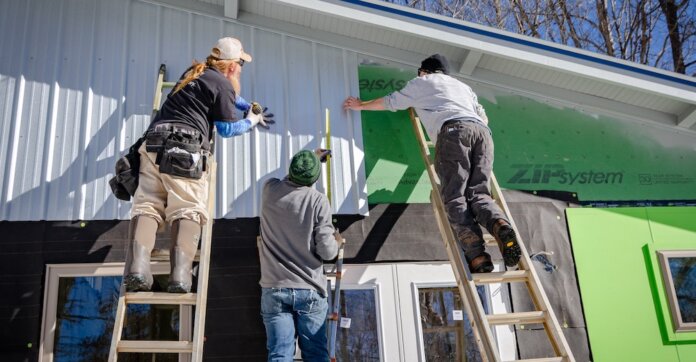Despite a Fed rate cut leading to significant drop in mortgage rates, housing starts dipped 0.5% in September compared with August, falling to a seasonally adjusted annual rate of 1.354 million, according to the U.S. Census Bureau and U.S. Department of Housing and Urban Development.
That’s down 0.7% compared with September 2023.
The decrease was due mainly a drop in multifamily production.
Starts of detached, single-family homes in September were at an annual rate of 1.027 million, an increase of 2.7% compared with the revised August rate of 1 million.
Starts of multifamily properties (five units or more per building) were at a rate of 317,000, a decrease of 4.5% compared with the previous month.
Building permits in September were at a seasonally adjusted annual rate of 1.428 million, a decrease of 2.9% compared with August and down 5.7% compared with September 2023.
Permits for single-family homes were at a rate of 970,000, an increase of 0.3% compared with August.
Permits for multifamily dwellings were at a rate of 398,000 in September, down 10.8% compared with the previous month.
Housing completions were at a seasonally adjusted annual rate of 1.680 million, which is down 5.7% compared with August but up 14.6% compared with September 2023.
“Single-family starts increased for the second consecutive month, which aligns with the improvement in homebuilder sentiment over the last two months,” says Odeta Kushi, deputy chief economist for First American, in a statement. “Builders improved outlook is likely due to the beginning of the Fed’s easing cycle and expectations of lower interest rates in 2025.
“Permits are a leading indicator of future starts, and they increased for the third consecutive month in September, a positive sign for a supply-starved housing market,” Kushi says. “The housing market remains structurally underbuilt, and homeowners with locked-in low mortgage rates are keeping existing-home inventory limited. More groundbreaking is needed to bridge the gap between supply and demand.
“Despite pent-up demand in the housing market, elevated financing costs continue to challenge both buyers and builders,” she adds. “While builders are growing more confident in their ability to sell newly built homes, they continue to face supply-side hurdles to building them, from higher construction costs to ongoing skilled labor shortages. Lower interest rates may help stimulate progress, but momentum will likely be constrained by these persistent challenges.”
In a statement, Carl Harris, chairman of the National Association of Home Builders (NAHB), echoed Kushi’s assertion that more supply is the key to getting the housing market moving again.
“In the long-run, the most effective way to tackle the nation’s housing affordability crisis is to increase the housing supply,” Harris says. “And as the election looms, policymakers need to be focused on the supply-side of the market to let builders build.”
“While single-family home building increased in September, higher mortgage interest rates in October are likely to place a damper on growth in next month’s data,” adds Robert Dietz, chief economist for NAHB. “Nonetheless, NAHB is forecasting a gradual, if uneven, decline for mortgage rates in the coming quarters, with corresponding increases for single-family construction. Multifamily construction will remain weak as completions of apartments are elevated.”
Photo: Jens Behrmann











